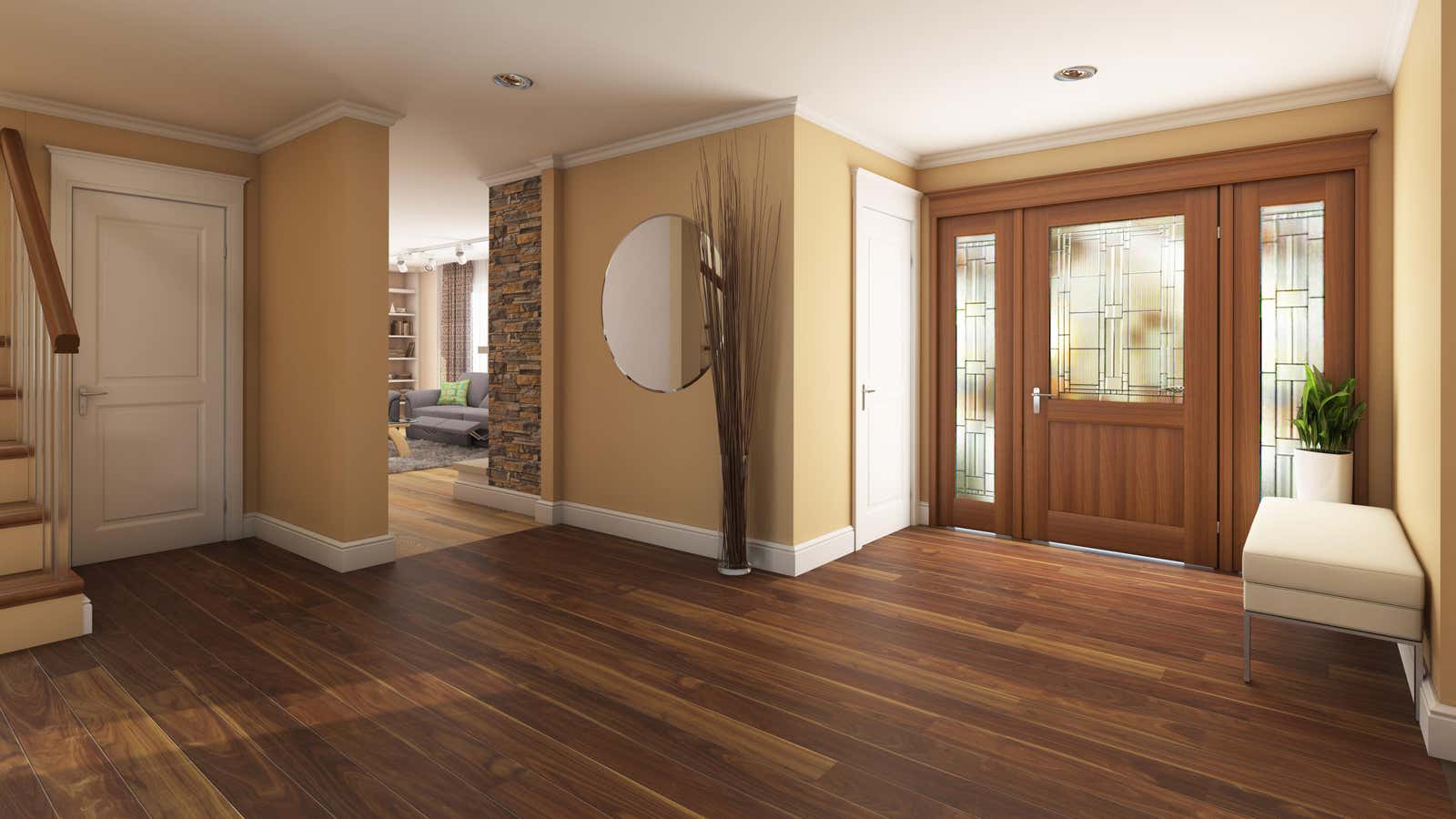How to Tell If You Have Wood or Laminate Flooring (and Why It Matters)

Even if you’ve never given much thought to the flooring you walk on, buying a home will change very quickly. There’s a reason everyone at House Hunters asks what the flooring is like in every home they visit: it’s because hardwood floors and laminate flooring are two very different things, but they can also be hard to tell apart. However, it’s helpful to know exactly what type of flooring you have because parquet and laminate flooring affect the cost, comfort, and maintenance of your home in different ways. Here’s how to tell if your flooring is wood or laminate and why it matters.
What is the difference between parquet board and laminate?
The fundamental difference between hardwood floors and laminate is how they are made: hardwood is harvested from trees, while laminate is a finished product. Solid wood is cut from a wide variety of trees, milled to size, sanded and finished. Laminate is a composite product consisting of four layers: a base layer of moisture resistant material, an inner layer of high or medium density fibreboard, which gives it strength and stability, a decorative or “photographic” layer on which the pattern and color of the flooring is imprinted – according to essentially a very high resolution photo of any material that mimics laminate – and finally a clear coated wear layer to protect the floor.
While you can install solid wood from a wide variety of woods to get a wide range of colors and looks, laminate flooring can be found in a much wider range of colors and patterns. It can mimic the look of hardwood very convincingly, but it can also come in a variety of patterns and colors that you can’t get with real wood. However, most laminates look like solid wood.
Parquet is potentially a much more durable flooring than laminate. With the right care , hardwood can last indefinitely, and even if it wears or gets damaged, it can often be renewed by sanding the top worn layer and applying a fresh coat of stain and sealer to bring it back to a whole new look. Laminate floors, on the other hand, are beyond repair and tend to have a limited lifespan, with higher quality materials lasting 10-20 years with normal wear and tear. However, laminate is much cheaper to install, costing $5 to $8 per square foot compared to $ 9 to $ 12 per square foot for hardwood.
There is also something else called engineered wood . In fact, it is high-quality plywood, covered with natural hardwood veneer. The main difference is installation cost, which can be as low as $3 per square foot, and durability: while a hardwood top layer will wear almost as well as a real one, it can only be renewed once or at most twice. . Faux wood won’t last forever like real hardwood, but it will last much longer than laminate – up to 30 years.
How to distinguish
Because solid wood is superior in so many ways and laminate will eventually need to be replaced, you need to be able to tell them apart. Modern laminate flooring can really fool the eye and look a lot like parquet without offering the same durability. If you have something that looks like wood flooring, here’s how to tell what material you’re dealing with:
- Repeating patterns. Even the most expensive laminate flooring will only have a limited number of “patterns” that give it the appearance of wood grain. Carefully inspect several boards and look for repeating elements. Knots are a good place to start, as they are relatively large, and if you spot two that look exactly the same, you’ve found a smoking laminate gun. If each plank looks unique, it’s probably real wood.
- Look for spots and dents. Ironically, despite being a stronger material, solid wood is more prone to stains and dents. Laminate surfaces can be very resistant to both, so if you have any imperfections in the floor, it’s most likely real wood. However, laminate can be scratched fairly easily, so some scratches aren’t the smoking checker you’re looking for.
- Look for nail heads and staples. Parquet flooring is usually installed by nailing or nailing boards to the subfloor. Laminate is usually glued or ” floated “. If you see nailheads or staples here and there, it’s most likely hardwood.
When it comes to hardwood and engineered wood, the only reliable way to tell the difference is to look at the sides: if you see layers, it’s engineered. But this requires access to the sides of the boards, which is usually not available when working with a bare floor.
home values
The reason you want to know what kind of flooring you have is not just about maintenance; it’s also about your home value. Real hardwood floors add so much more value to your home— more than half of potential homebuyers will pay more for a home with hardwood floors . If you think you’ll ever be able to sell your home, finding out what kind of flooring it has will help you get the price right, and if you’re buying a home, knowing the type of flooring will help you make the right offer.
The rule of thumb regarding the cost of laminate and a home is simple: if you’re moving from carpet, vinyl, or some other cheap flooring, laminate is a good investment in terms of home value. If you already have hardwood floors, laminate will be a step down, so consider upgrading what you have or replacing it with a similar material.